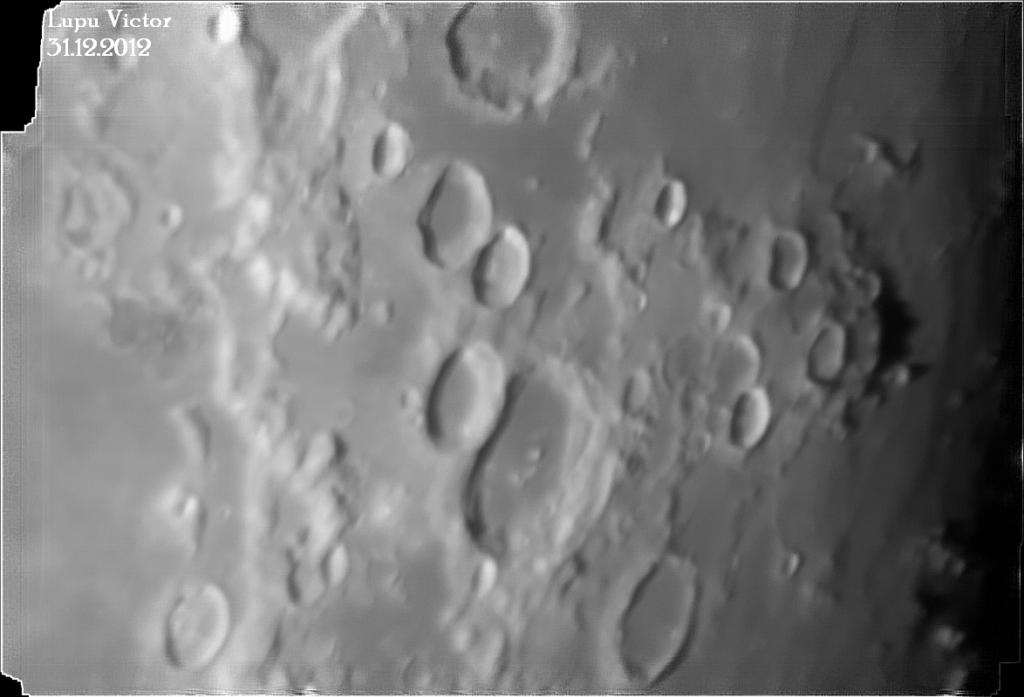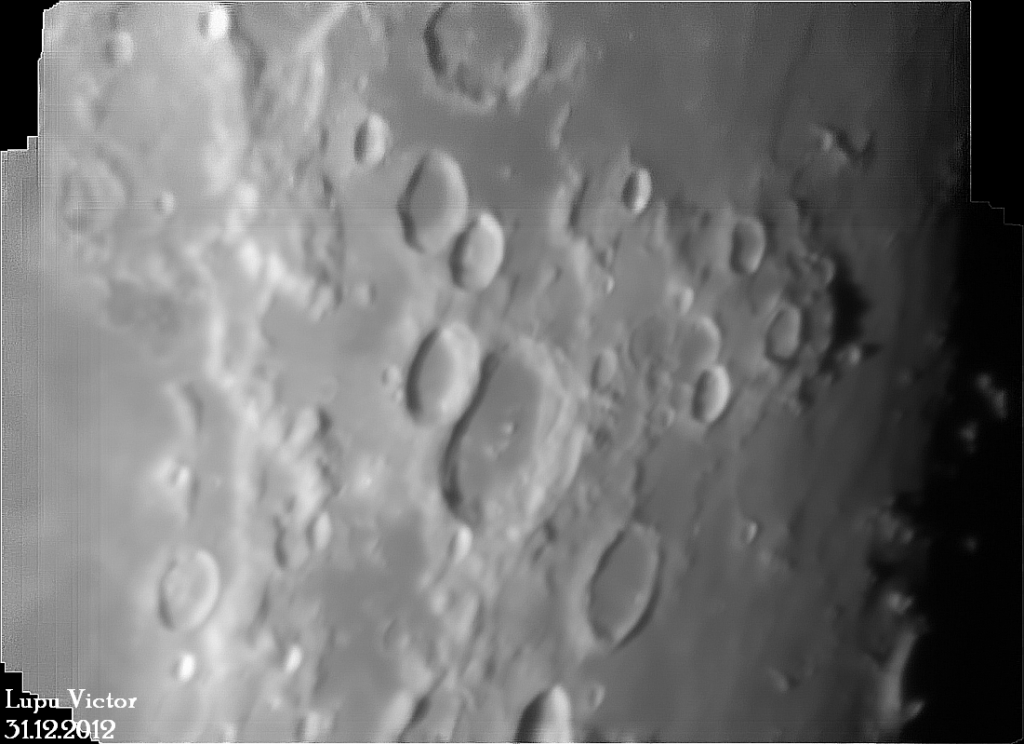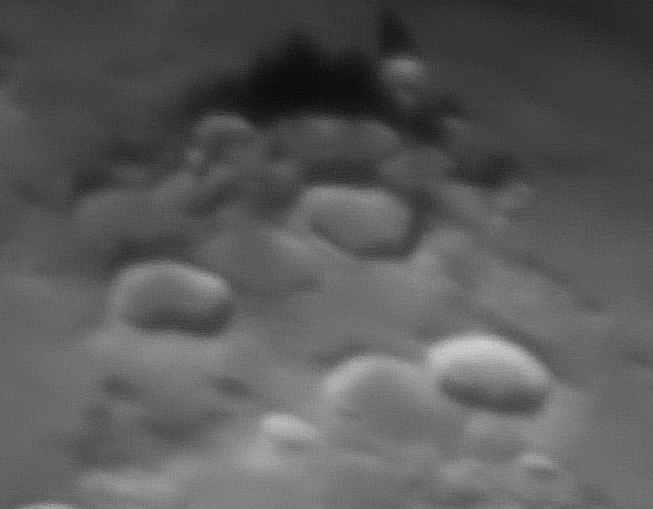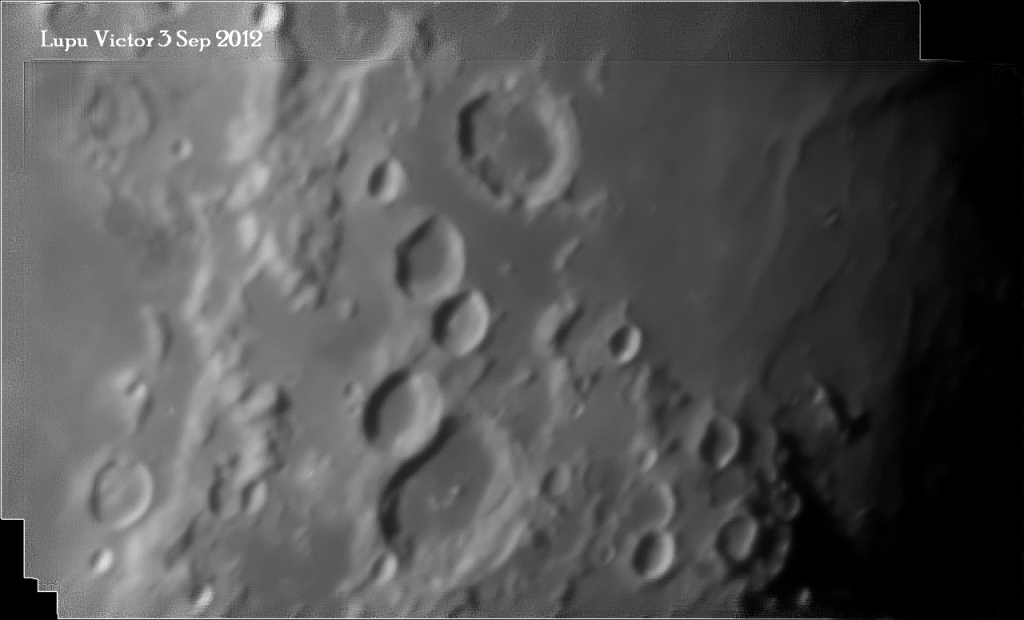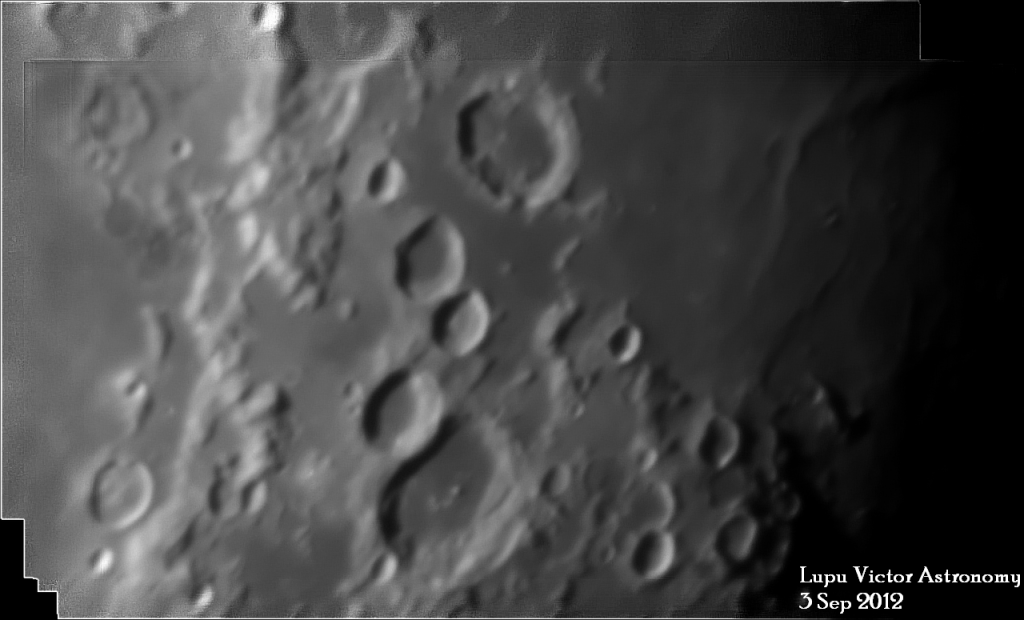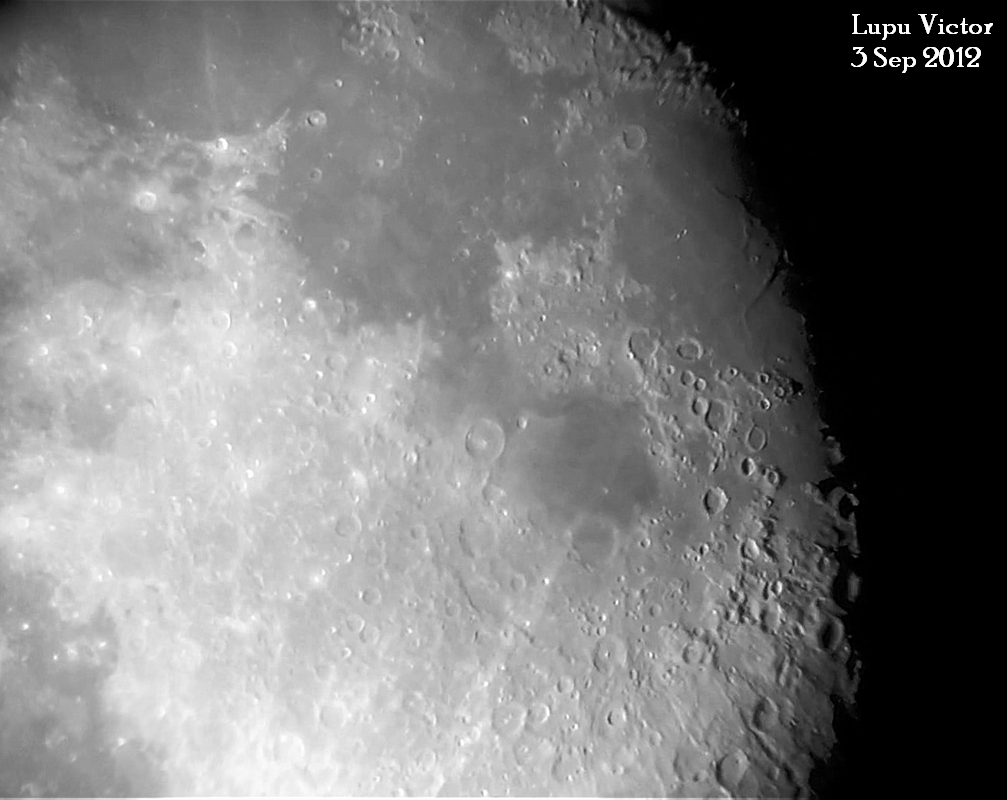Visible craters in the images are: Colombo (76 km), Magelhaens (41 km), Bellot (17 km), Crozier (22 km), McClure (24 km), Bohnenberger (33 km).
To view the processed images in Registax and more information about this area, click here.
To view the video of which I processed these images, you can go back to the article: Craters Goclenius Magelhaens and Colombo. Video by telescope.
Age of the Moon: 17 days
Phase: 93% (0% = New, 100% = full)
Distance: 394.960 km
Optics: Celestron C8-Newtonian telescope, 20mm Plossl, 2x Barlow
Mount: CG5 (EQ5) motorized
Camera: Sony CX130
Filter: no
Date: 31/12/2012
Location: Baia Mare, Romania
Processing: FastStone Image Viewer
114 frames at 90 % gaussian (Registax 5) 03.09.2012.
|








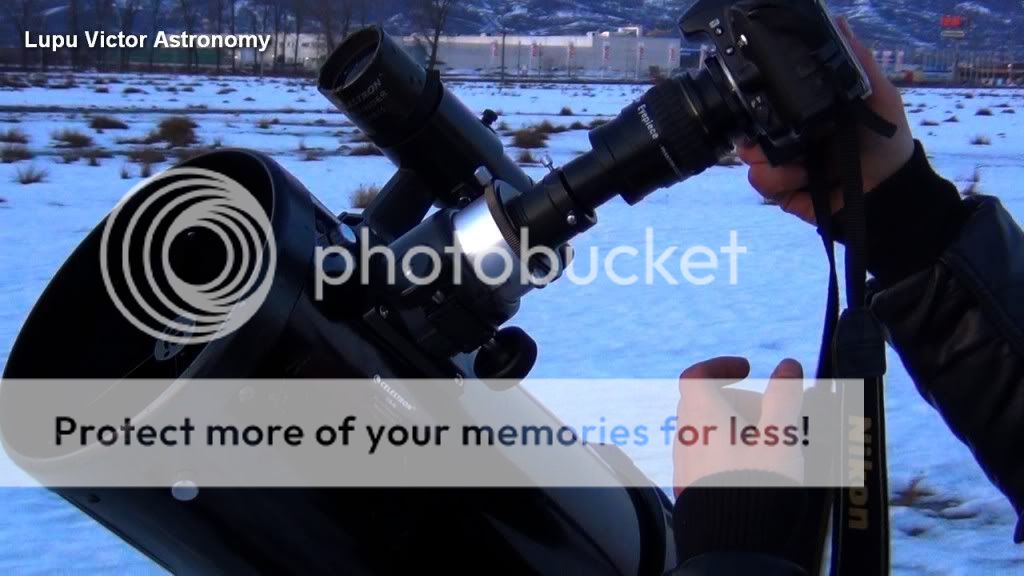

 Friday, June 06, 2014
Friday, June 06, 2014
 Unknown
Unknown






